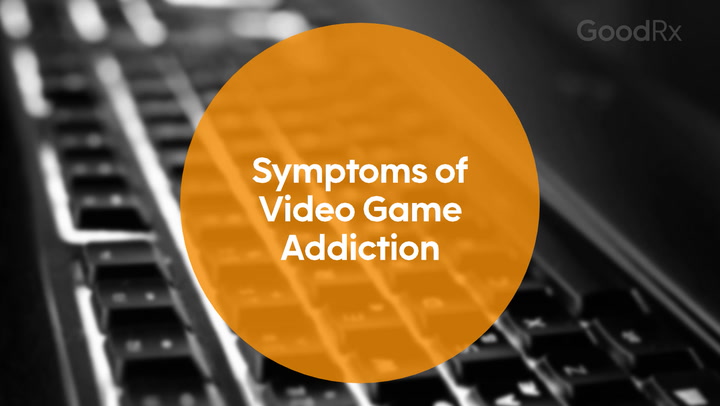
Do I Have a Porn Addiction? How Can I Treat It?
The Unmentionables is a series that answers common questions we all have about our bodies but are sometimes afraid to ask.
Key takeaways:
Pornography occupies a unique place in our culture. It’s often a private or intimate activity, and it is increasingly available with the rise in technology. At the same time, it can be a taboo subject to talk about with other people.
This can make it hard to know how much porn is right for you to look at, or if it is creating a problem in your life. A porn addiction isn’t an official mental health diagnosis. But it can still create the same kind of issues as drug and alcohol use.
That’s why it’s important to understand the signs and nature of porn addiction. It can help you better gauge your relationship with porn. Then you’ll be able to determine if you need to make some changes or seek treatment.

Historically, in all its forms, pornography has been at the center of debate between people questioning the moral, legal, and ethical impacts of the material. Whether you experience porn as problematic or potentially educational, it is becoming more widely acceptable in the U.S., according to recent polls. With more widespread viewing of porn, there is an increased risk that you could face dangers linked to the material, including damaged relationships and even pornography addiction.
Read on to learn about pornography addiction, as well as its symptoms and possible treatments.
Can I be addicted to porn?
When the term “addiction” is used, you probably think about people who abuse alcohol and other drugs. So the idea that someone could be addicted to viewing pornography may seem like a new or confusing idea. The world of addiction research and addictive disorders is changing, though. Now, experts are working to understand how addictions can form without the need for substance use.
In 2011, the American Society of Addiction Medicine (ASAM) changed its definition of addiction to also include behaviors. And, in 2013, the American Psychiatric Association (APA) recognized behavioral addictions for the first time. Although there is not an official mental health diagnosis of pornography addiction, there is growing evidence to support the idea that people can become addicted to pornography.
When you drink alcohol, smoke cannabis (marijuana), or consume any other drug, these substances create brain changes that influence your thoughts and behaviors, leading to addiction. Viewing pornography has the power to create brain changes that are similar to substance use.
Like substance addictions, viewing pornography can be a long-term condition marked by relapse, cravings, and tolerance, as well as withdrawal.
Read more like this
Explore these related articles, suggested for readers like you.
What are some other types of behavioral addictions, and how does porn addiction compare?
Currently, gambling disorder is the only diagnosable behavioral addiction, according to the APA. But behavioral addictions could involve any activity that stimulates you mentally, physically, and emotionally, as well as socially. Behavioral addictions can be active or passive, so watching TV passively could trigger an addiction just as can playing video games actively.
You may have heard the term addiction applied to any repeated behavior like:
Exercise and sports
Shopping
Working
Using the internet or social media
Currently, the APA labels internet gaming disorder as a “condition for further study,” but it is not an official diagnosis yet.
These behaviors may seem quite different from viewing pornography due to their range of social acceptance. You may receive praise for working hard at your job or excelling at sports, while people may think viewing pornography is a shameful act. All of these behaviors, even the ones that may be viewed positively, can be harmful addictions if they negatively impact your life.
Is pornography addiction on the rise?
Though it is hard to measure, it seems that pornography viewing is increasing, and pornography addiction could be following this trend. Studies have found rates of addiction to porn to be anywhere from about 4.5% to 10% of people.
It seems there are three main factors fueling increasing rates of porn addiction:
Accessibility: If you have a smartphone, you now have instant access to unlimited amounts of pornography.
Affordability: Though a lot of pornography may have fees attached, you can find volumes of free pornography online, so cost is no longer a limiting factor.
Anonymity: In the past, a person would physically have to walk into a store or theater to purchase or view pornography, which may have induced feelings of shame. Now, anyone can view pornography in an anonymous way.
What are the symptoms of porn addiction?
In many cases, the symptoms of porn addiction will match the symptoms of a substance use disorder. The primary symptom of porn addiction is that watching pornography is leading to problems with work, homelife, or social relationships.
Some common symptoms of porn addiction include:
Viewing more pornography than you would like
Unsuccessfully trying to cut down or reduce pornography viewing
Experiencing cravings to view porn
Continuing to view porn even though it is harming your relationships, physical health, or mental well-being
Needing more porn or more unusual porn to fulfill the desire
Discomfort, restlessness, and irritability if you cannot view pornography
It’s important to note that you cannot base an addiction only on the time spent viewing porn. One person could view material for only a few minutes each day and really struggle, while someone else could view a lot of porn without developing an addiction.
What are the signs and outcomes of an addiction to porn?
Identifying someone as being addicted to porn may be confusing because people may hide their behaviors. Likewise, admitting that you could be a porn addict is complicated because denial is often a part of addiction.
Just watching a lot of porn does not automatically create an addiction, so you must look for the signs of porn addiction:
Lying to people about using porn
Withdrawing from relationships and spending more time alone
Changed energy levels and sleep schedules
Reduced self-care and hygiene
Failing to complete regular responsibilities at home, school, or work
Making excuses for behavior
When porn addiction continues, it can result in unwanted outcomes to your health and well-being, such as those explained below.
Sexual dysfunction
Although the connection is cloudy, there is a strong link between the rise of online pornography and sexual dysfunction with partners, especially among younger males.
Mental health issues
Porn addiction could also result in an increased risk for anxiety disorders and mood disorders like depression and bipolar disorder.
Substance use
Higher rates of substance use disorders are linked to porn addiction.
Relationships
Porn addiction can have a very negative impact on relationships as well. Addicted people engage in more secrecy, and they are more critical of their partner’s appearance, which can be damaging to the relationship.
Self-esteem
Having a porn addiction means that you could also be more critical of your body, feel increased pressure during sex, and report less frequent sex. Each of these factors could hurt your self-esteem and feelings of worth.
How can you treat a porn addiction?
Porn addiction treatment will look much like substance use services, with treatment intensities that match your needs and account for all related physical health and mental health issues. Reducing or ending use will be an essential part of treatment.
So far, there are not any medications designed to specifically help with porn addiction, so psychotherapy is the primary approach. Once treatment begins, professionals will focus on the risk factors that make you more prone toward addiction. They’ll address triggers like loneliness and stress, as well as depressive symptoms and anxiety. This will allow treatment providers to teach new coping skills to limit future risk.
What available resources can help someone with pornography addiction?
Professional treatment will be the best resource if you are in need, but connecting to online and in person support groups can assist as well. Some good options include:
The bottom line
Even though pornography addiction is not an officially recognized condition, it can impact many people in dramatic ways. Left untreated, a pornography addiction could diminish your mental, social, and physical health, so be sure to seek appropriate treatment if this addiction is part of your life.
Why trust our experts?


The Unmentionables is a series that focuses on common curiosities about our bodies that, at some point, have been labeled as taboo, shameful, or embarrassing. But these are important questions we all have about our health, and we should be able to ask them. This series aims to dispel the stigma, normalize the discussion, and openly address these important health topics.
References
Alavi, S. S., et al. (2012). Behavioral addiction versus substance addiction: Correspondence of psychiatric and psychological views. International Journal of Preventive Medicine.
American Psychological Association. (2020). Religious, moral beliefs may exacerbate concerns about porn addiction.
de Alarcón, R., et al. (2019). Online porn addiction: What we know and what we don’t—a systematic review. Journal of Clinical Medicine.
Dugan, A. (2018). More Americans say pornography is morally acceptable. Gallup.
Grant, J. E., et al. (2010). Introduction to behavioral addictions. The American Journal of Drug and Alcohol Abuse.
Love, T., et al. (2015). Neuroscience of internet pornography addiction: A review and update. Behavioral Sciences (Basel, Switzerland).
McCormack, M., et al. (2017). Enjoyment, exploration and education: Understanding the consumption of pornography among young men with non-exclusive sexual orientations. Sociology.
MedlinePlus. (n.d.). Substance use disorder.
Porn Addicts Anonymous. (2020). Porn addicts anonymous.
Sex Addicts Anonymous. (n.d.). Sex addicts anonymous.
Sexual Recovery Anonymous. (n.d.). Sexual recovery anonymous.
Substance Abuse and Mental Health Services Administration. (2022). SAMHSA’s national helpline.
If you or someone you know struggles with addiction, help is available. Call SAMHSA’s National Helpline at 1-800-662-4357 to learn about resources in your area.






















